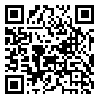Volume 9, Issue 3 (August 2022)
IJML 2022, 9(3): 169-186 |
Back to browse issues page
Yazd Cardiovascular Research Center, Non-communicable Diseases Research Institute, Shahid Sadoughi University of Medical Sciences, Yazd, Iran
Abstract: (423 Views)
Background and Aims: Substantial damage to the kidney tissue and diabetic nephropathy (DN) can be caused by chronic hyperglycemic conditions and exposure to a high level of blood glucose. In the current study, we explored the capability of adipose-derived mesenchymal stem cells (ADSCs) and Toll-like receptor-4-primed mesenchymal stem
cells (TLR4-primed MSCs) on kidney regeneration, resolution of inflammation, and alleviation of diabetic nephropathy in DN in the rats.
Materials and Methods: STZ-induced diabetic rat models were divided into 5 subgroups, including 1) DN group, 2) DN group received insulin, 3) DN group received human foreskin fibroblast (DN-HFF), 4) DN group received single pulse of 1×106 cells of MSCs and 5) DN group received single pulse of TLR4-primed MScs. Thereafter, biochemical and histological analysis was performed on DN-model groups. Biochemical analysis exhibited a blood urea nitrogen level recovery in both MSCs and TLR4-primed MSCs-treated groups. Administration of MSCs also up-regulated mRNA expression of Bcl-xL, while the expression of Bax was significantly down-regulated.
Results: Histological and molecular results showed that TLR4-primed MSCs have an anti-inflammatory and anti-apoptotic effect on inflamed kidneys and effectively reduced DN indicators in the TLR4-primed MSCs group compared to the unprimed MSCs group.
Conclusion: Priming with LPS improves the therapeutic effects of MSCs in the rat model of DN, consequently lessening the symptoms of DN rats. This study proposes that primed MSCs can be served as a potential therapeutic approach in diabetes mellitus and DN management.
cells (TLR4-primed MSCs) on kidney regeneration, resolution of inflammation, and alleviation of diabetic nephropathy in DN in the rats.
Materials and Methods: STZ-induced diabetic rat models were divided into 5 subgroups, including 1) DN group, 2) DN group received insulin, 3) DN group received human foreskin fibroblast (DN-HFF), 4) DN group received single pulse of 1×106 cells of MSCs and 5) DN group received single pulse of TLR4-primed MScs. Thereafter, biochemical and histological analysis was performed on DN-model groups. Biochemical analysis exhibited a blood urea nitrogen level recovery in both MSCs and TLR4-primed MSCs-treated groups. Administration of MSCs also up-regulated mRNA expression of Bcl-xL, while the expression of Bax was significantly down-regulated.
Results: Histological and molecular results showed that TLR4-primed MSCs have an anti-inflammatory and anti-apoptotic effect on inflamed kidneys and effectively reduced DN indicators in the TLR4-primed MSCs group compared to the unprimed MSCs group.
Conclusion: Priming with LPS improves the therapeutic effects of MSCs in the rat model of DN, consequently lessening the symptoms of DN rats. This study proposes that primed MSCs can be served as a potential therapeutic approach in diabetes mellitus and DN management.
Type of Study: Research |
Subject:
Immunology
Received: 2021/08/24 | Accepted: 2022/09/9 | Published: 2022/10/15
Received: 2021/08/24 | Accepted: 2022/09/9 | Published: 2022/10/15
| Rights and permissions | |
 |
This work is licensed under a Creative Commons Attribution-NonCommercial 4.0 International License. |





